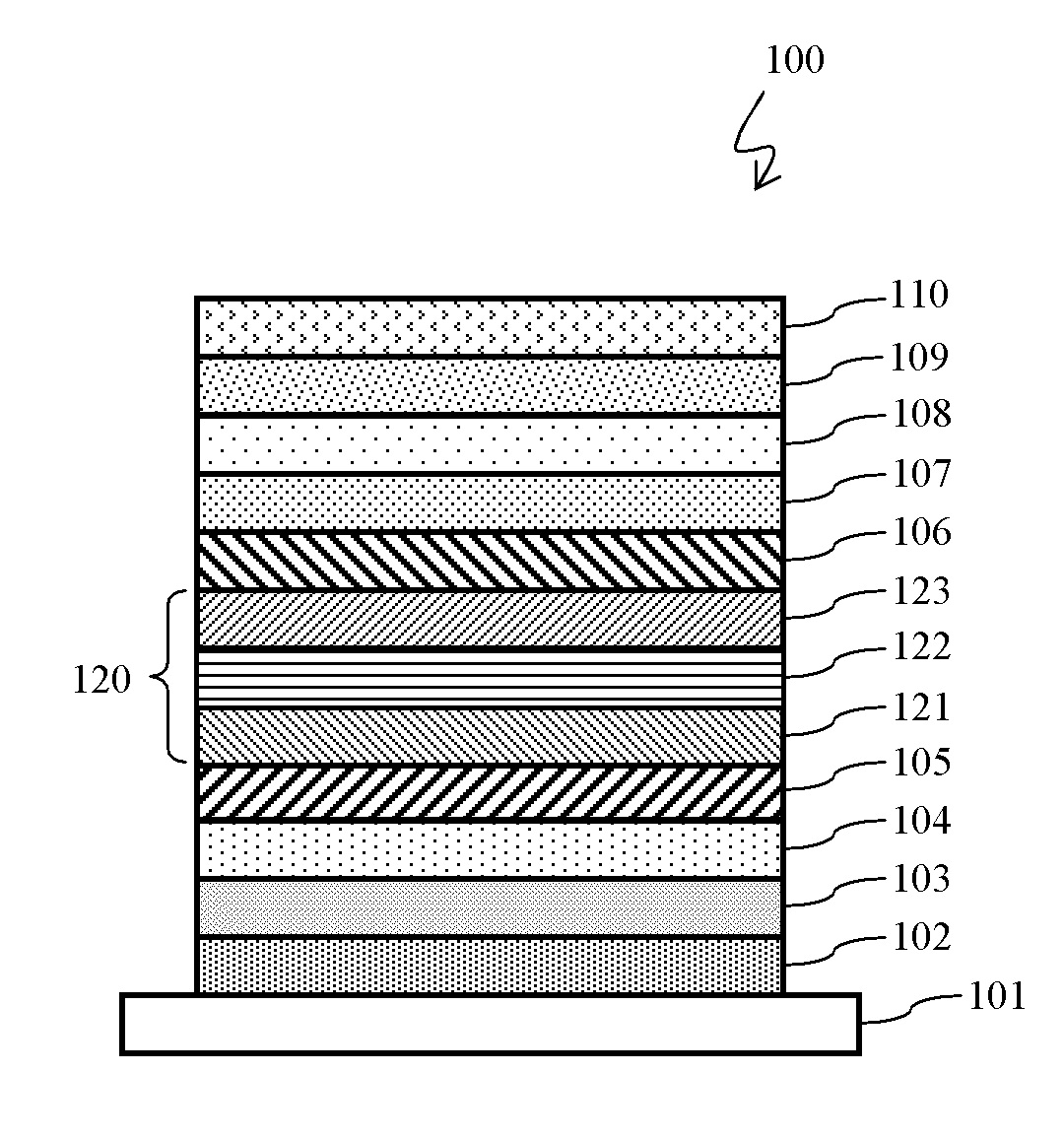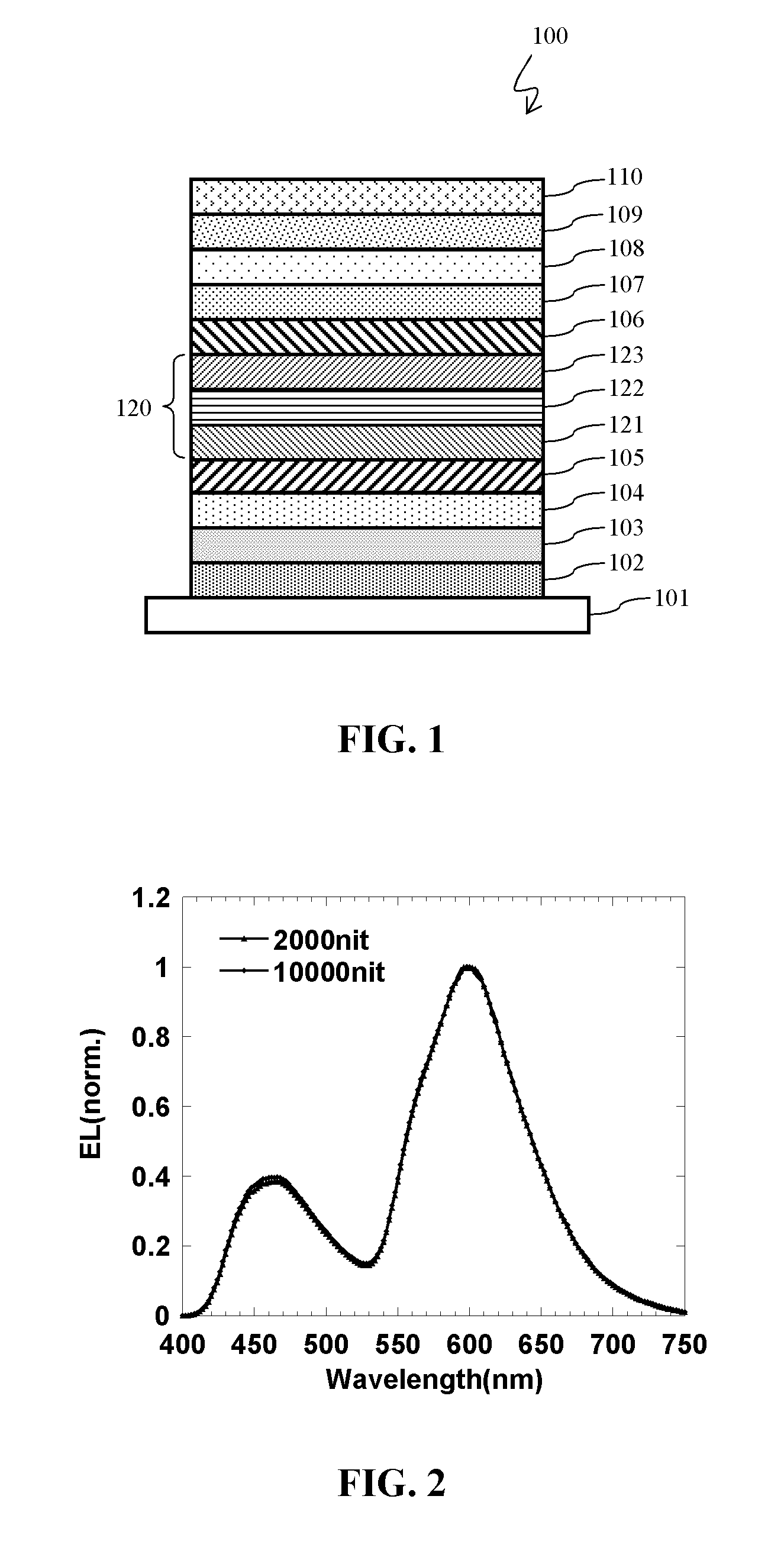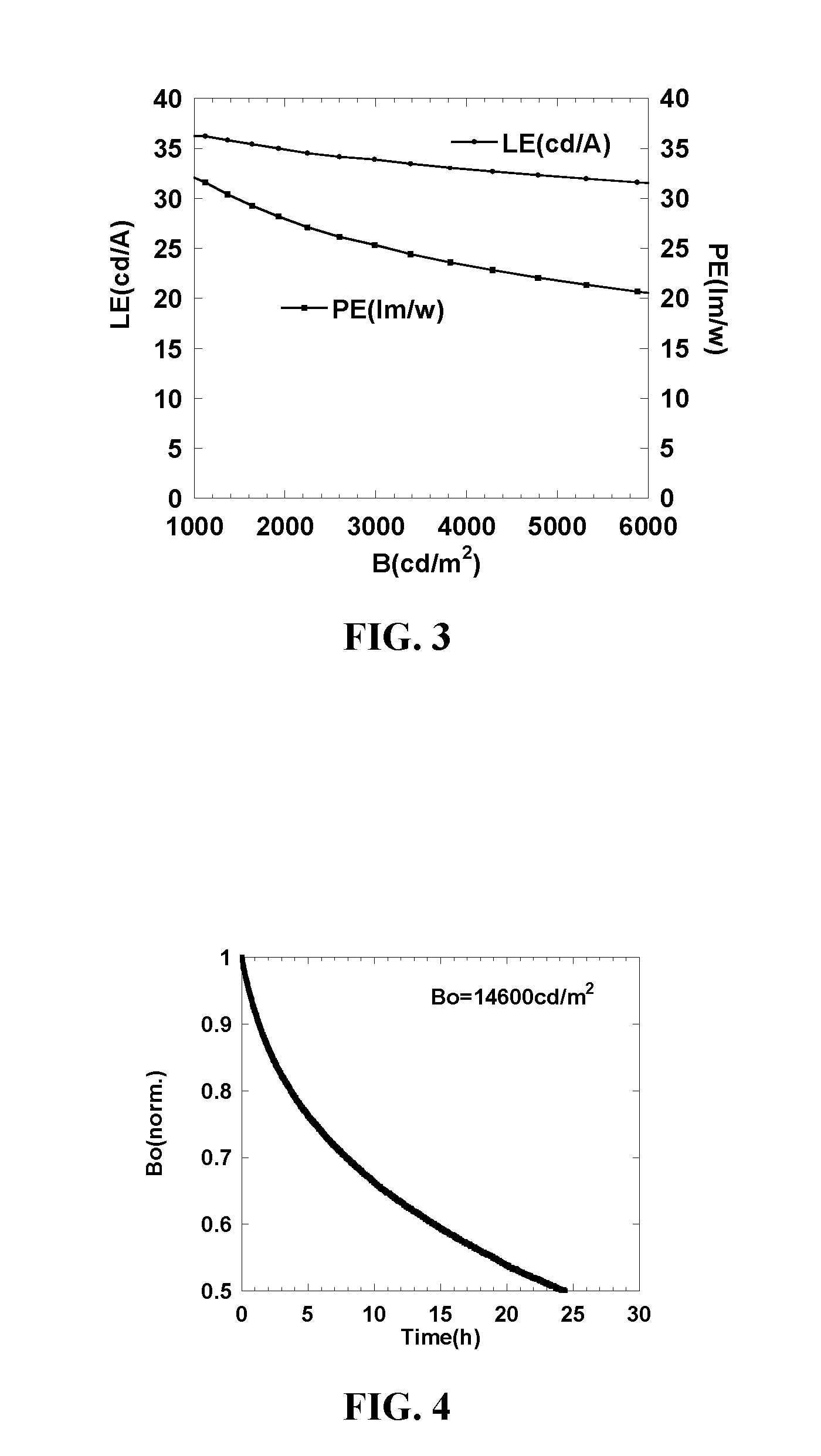Top-emitting white organic light-emitting diodes having improved efficiency and stability
a technology of organic light-emitting diodes and top-emitting white colors, which is applied in the direction of organic semiconductor devices, solid-state devices, thermoelectric devices, etc., can solve the problems of affecting general lighting applications and the microcavity effect may be serious
- Summary
- Abstract
- Description
- Claims
- Application Information
AI Technical Summary
Benefits of technology
Problems solved by technology
Method used
Image
Examples
example 1
Device Fabrication
[0046]Pre-cleaned glass substrates were baked at about 200° C. for about 1 hour under ambient environment, then under UV-ozone treatment for about 30 minutes. Then, a poly methyl methacrylate (PMMA) layer (about 180 nm thick) was spin-coated on top of the surface of the glass substrates (solution: 2 wt % PMMA in di-chloro benzene [DCB] solvent) at about 6000 RPM for about 40 seconds. The substrates were then baked at about 120° C. for about 2 hours. The substrates were loaded into a deposition chamber. A bi-layer reflective bottom anode, (50 nm Al layer and 50 nm Ag layer) was deposited sequentially, first Al then Ag, at a rate of about 2 Å / s. Molybdenum oxide (MoO3, about 10 nm) was deposited as a hole-injecting layer at deposition rate of about 1 Å / s. Then a p-doping layer (20 nm), MoO3 was co-deposited with 4,4′-bis[N-(naphthyl)-N-phenyl-amino]biphenyl (NPB) at 5% in volume ratio at the deposition rate of about 0.051 Å / s and about 1 Å / s for MoO3 and NPB, respect...
PUM
 Login to View More
Login to View More Abstract
Description
Claims
Application Information
 Login to View More
Login to View More - R&D
- Intellectual Property
- Life Sciences
- Materials
- Tech Scout
- Unparalleled Data Quality
- Higher Quality Content
- 60% Fewer Hallucinations
Browse by: Latest US Patents, China's latest patents, Technical Efficacy Thesaurus, Application Domain, Technology Topic, Popular Technical Reports.
© 2025 PatSnap. All rights reserved.Legal|Privacy policy|Modern Slavery Act Transparency Statement|Sitemap|About US| Contact US: help@patsnap.com



